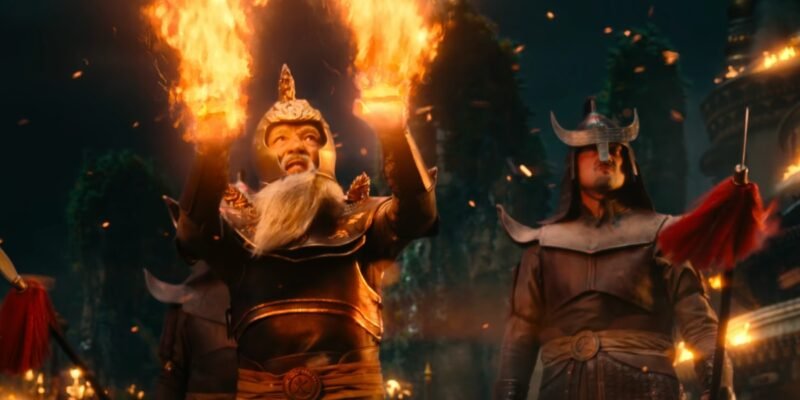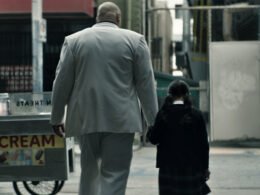Straight from the onset of the first episode, Netflix’s Avatar: The Last Airbender series takes a new approach to telling the iconic story. The series decides not to begin with Aang (Gordon Cormier) being unfrozen from the ice like they do in the animated show. Instead, the live-action adaptation starts with a flashback to Monk Gyatso (Lim Kay Siu) and the Southern Air Temple being desecrated by Fire Lord Sozin (Hiro Kanagawa). Sozin’s murder of the Air Nomads is left off-screen in animation. However, the Fire Lord’s terrorizing wrath is finally portrayed on-screen in the new Netflix series.
Taking on a live-action adaptation of one of the most beloved animated shows of all time is no easy task. Avatar: The Last Airbender has stolen the hearts of fans throughout the years for its unique premise and powerful storytelling. The Netflix live-action adaptation is far from a beat-for-beat retelling, but thankfully, the series still does a wonderful job of capturing the soul of the original.
‘Avatar: The Last Airbender ‘Expands on Avatar Aang and Monk Gyatso’s Relationship
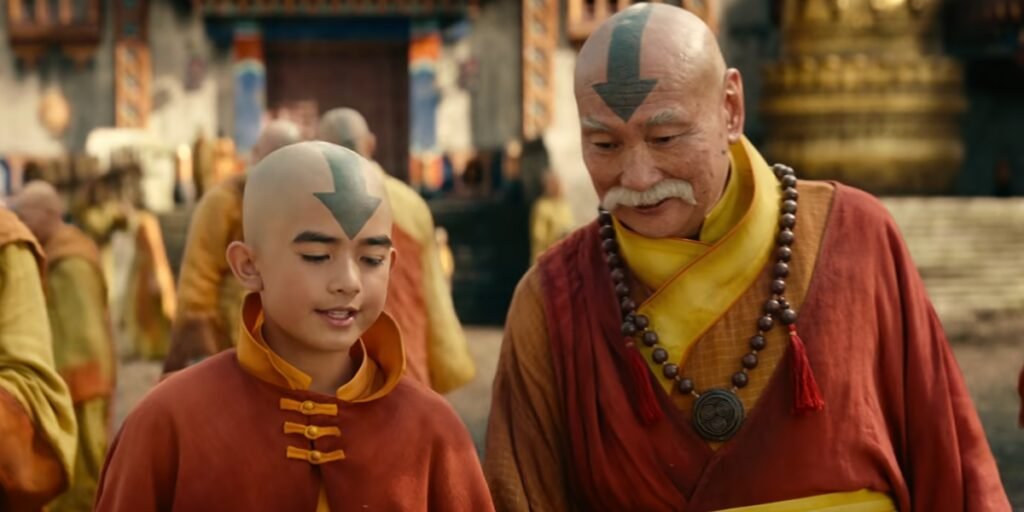
It would’ve been nice to still hear Aang want to go penguin sliding like the first episode of the animated series, however, the new opener is still a welcome change of direction. Seeing Aang spending time with Monk Gyatso provides important additional context to his character. It also makes emotional scenes in future episodes of the hit that much harder.
Although Aang didn’t grow up with parents, he still had a family prior to his time trapped in ice. This isn’t shown much throughout the Avatar: The Last Airbender animated series. While he often describes what his time was like at the Southern Air Temple, flashbacks are limited. One of the best changes in the live-action series on Netflix is that this is no longer the case.
Episode 1 gives viewers a chance to learn about Aang’s closest friend and father figure Monk Gyatso. The playful nature of the character sheds light on how the 12-year-old Avatar turns out the way he does. While losing the Southern Air Temple and all of his fellow Air Nomads would obviously be traumatic on its own, the toughest pill for Aang to swallow is losing Monk Gyatso. The additional time spent between these two characters makes the pain and struggle of Aang’s journey all the more clear.
Connecting With the Air Nomads Increases the Coming Tension

In addition to the time spent with Monk Gyatso, the new Avatar: The Last Airbender series also introduces the Air Nomads from the Southern Air Temple. With war looming, the group has to decide whether or not to tell Aang that he’s the Avatar. Without these crucial scenes, it would be much more difficult for new fans to understand that Aang’s disappearance was a rash decision.
It’s easy to forget that Avatar: The Last Airbender is a story of child soldiers. Although it’s true that Aang disappeared instead of facing his duties as the Avatar, the real truth is far more complicated. Seeing Aang’s disappearance first-hand, it’s much easier to understand his perspective and the timeline of events.
Avatar Aang was frozen in ice for 100 years, but his disappearance wasn’t exactly his fault. He’s just a child, who is emotional after learning his life is about to change and needs some time away. While his disappearance led to a war waged by the Fire Nation, the circumstances make it hard to place the blame directly on Aang.
Netflix’s ‘Avatar: The Last Airbender’ Sheds Light on Fire Lord Sozin
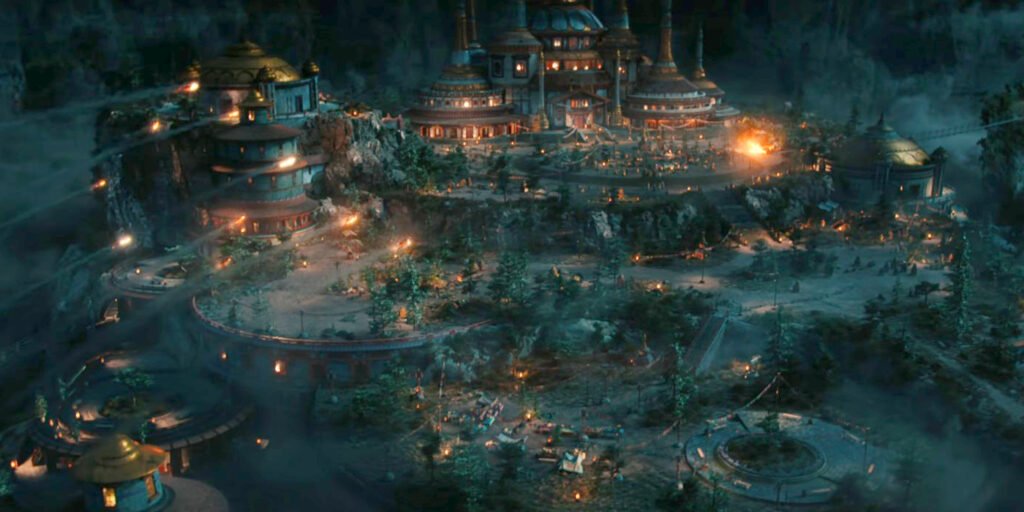
Fire Lord Sozin’s life is left relatively unexplored throughout the Avatar: The Last Airbender animated series. Although there is time spent with him and Avatar Roku as younger men, his attack on the Southern Air Temple is more of a legend. While Fire Lord Ozai (Daniel Dae Kim) continues the war 100 years later in the present, it’s his grandfather Sozin who begins the bloodshed.
The addition of the battle of the Southern Air Temple succeeds in making the series darker, though the animated series features many adult themes regardless. By returning to the past to depict Fire Lord Sozin and the Air Nomad’s battle, the Avatar: The Last Airbender series greatly improves the audience’s understanding of the Hundred Year War’s purpose.
Part of making a compelling villain is providing an understanding for their motives. Fire Nation characters like Iroh (Paul Sun-Hyung Lee) and Prince Zuko (Dallas Liu) are fan favorites for a reason; in order for their redemption arcs to be fully appreciated, it’s important to understand their family origins.
Any Adaptation Should Have a Certain Degree of Change
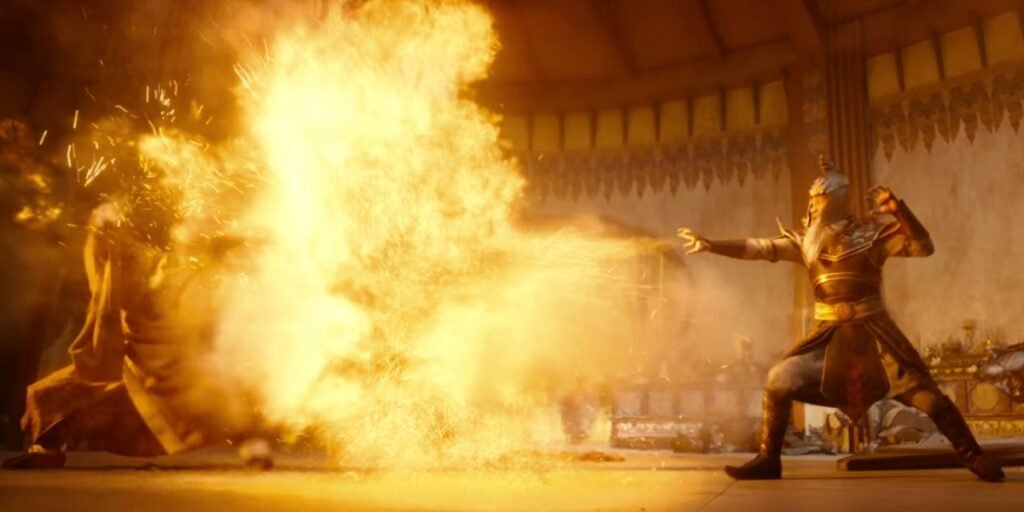
Fire Lord Sozin and Monk Gyatso are two legendary characters in Avatar: The Last Airbender lore. Spending more time with these two is the strongest change Netflix made. It’s incredibly difficult to live up to the expectations set by the animated series. However, by expanding on these important characters, the live-action adaptation was able to accomplish two important tasks at once.
Not only is it beneficial to tell the story of Fire Lord Sozin’s destruction of the Air Nomads at the Southern Air Temple, but the new series also sends an important message with this change — this adaptation isn’t the exact same story. Since the animated series is incredibly important to so many people around the world, a one-for-one retelling would never have worked.
By adding context to Fire Lord Sozin, the Air Nomads, and how Aang got stuck in the ice, the series sets a strong tone for the rest of the season. It’s made clear to viewers that while the medium and story beats are different, the heart and soul remain. Avatar: The Last Airbender is one of the most exciting stories ever told. Unsurprisingly, the live-action version isn’t as strong as the original, but changes like this help make it a worthy adaptation.
Follow our socials for all the latest news, reviews, and entertainment coverage. Make sure to subscribe to the Agents of Fandom podcast for in-depth Avatar: The Last Airbender coverage.





